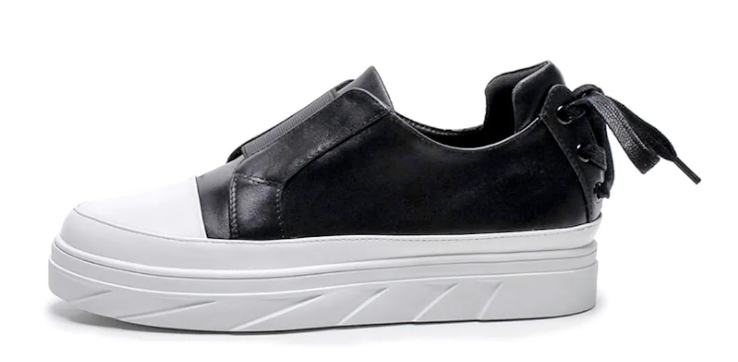The front and back heels of thick soled shoes are relatively thick, which first affects the stability of the feet. When walking or running in thick soled shoes, the support area of the feet will decrease and stability will be reduced. Especially on uneven roads, thick soles can make it difficult for the feet to perceive potholes, making the ankle more susceptible to external impacts and increasing the risk of ankle sprains.
Although thick soled shoes have a height increasing effect, long-term wear is not conducive to ankle health.

When wearing thick soled shoes, the muscles and ligaments of the feet need to bear greater pressure. Long term wearing can easily lead to foot fatigue, soreness, and even trigger diseases such as plantar fasciitis; The soles of some thick soled shoes are harder, and when the wearer walks and runs, the leg and knee joints need to withstand greater impact force, which can easily exacerbate joint wear and cause joint pain and swelling.
In addition, long-term wearing of thick soled shoes may also affect spinal health. Thick soled insoles elevate the foot, causing the wearer's center of gravity to shift forward. When the heel is raised, the walking gait changes. In order to maintain body balance, the spine needs to bear greater pressure, which can lead to problems such as lower back pain and spinal fatigue over time.
In addition to thick soled shoes, shoes with soft soles and strong cushioning capabilities are also popular among consumers, providing a "cotton like" foot feel. Although this foot feel can improve the comfort of short distance walking to a certain extent, an overly soft sole cannot provide sufficient support and protection for the feet.
Wearing shoes with excessively soft soles for prolonged walking or exercise can cause the fascia on the sole of the foot to remain in a state of sustained tension, which can easily lead to fatigue and inflammation; The lack of necessary support in the arch of the foot can lead to gradual collapse and the formation of functional flat feet, which not only affects walking posture but also increases the risk of other foot diseases; For people who already suffer from flat feet, insufficient sole support is more likely to cause heel eversion, excessive pulling on the Achilles tendon, and lead to Achilles tendinitis.
The impact of wearing soft shoes on the legs cannot be ignored. In order to maintain balance between walking and standing, the wearer's calf muscles need to put in more effort, making them more prone to fatigue; Insufficient sole support may also cause changes in the wearer's leg posture, leading to leg pain.
Choose suitable shoes for different scenarios
In addition to the thick and soft soles of the shoes, non fitting shoes are also a common cause affecting foot health among the patients I have treated, "said Chen Junquan, deputy chief physician of the Department of Orthopedics at Wuyi Traditional Chinese Medicine Hospital in Jiangmen City. Non fitting shoes and squeezing the feet can easily lead to foot pain, blisters, or pain such as corns and cystitis; For children and adolescents, wearing inappropriate shoes for a long time may affect the normal bone growth of the feet, such as functional flat feet; Severe cases may even lead to scoliosis
Consumers need to pay attention when choosing shoes, first of all, the shoes should fit well, the size should be appropriate, and it is advisable not to squeeze or loosen the feet; Pay attention to the material of the shoes, ensuring breathability and comfort, and avoiding discomfort caused by covering the feet; The sole should have good support and anti slip performance to ensure walking safety; Both high and low shoe soles can affect foot health and body balance, so the heel height should be appropriate. Trying on is very important. Before purchasing shoes, try walking around to feel comfortable and whether there are any scratches on the feet.
When choosing the thickness and softness of the sole, it is not advisable to be too thick or too thin in terms of thickness. Being too thick may affect stability and foot feel, while being too thin may lack sufficient cushioning and protection. Generally, a moderate thickness should be chosen according to activity needs. In terms of softness, it is important to balance comfort and support. For leisure activities such as walking, a relatively soft sole can be chosen to provide a better foot feel; If you engage in vigorous exercise or stand and walk for a long time, you need some support and cannot be too soft to avoid foot fatigue and injury. At the same time, personal foot conditions and preferences should also be considered in terms of softness and hardness.
PREV: Various materials of socks
NEXT: Summer shoe wear, a few tips to help you solve it